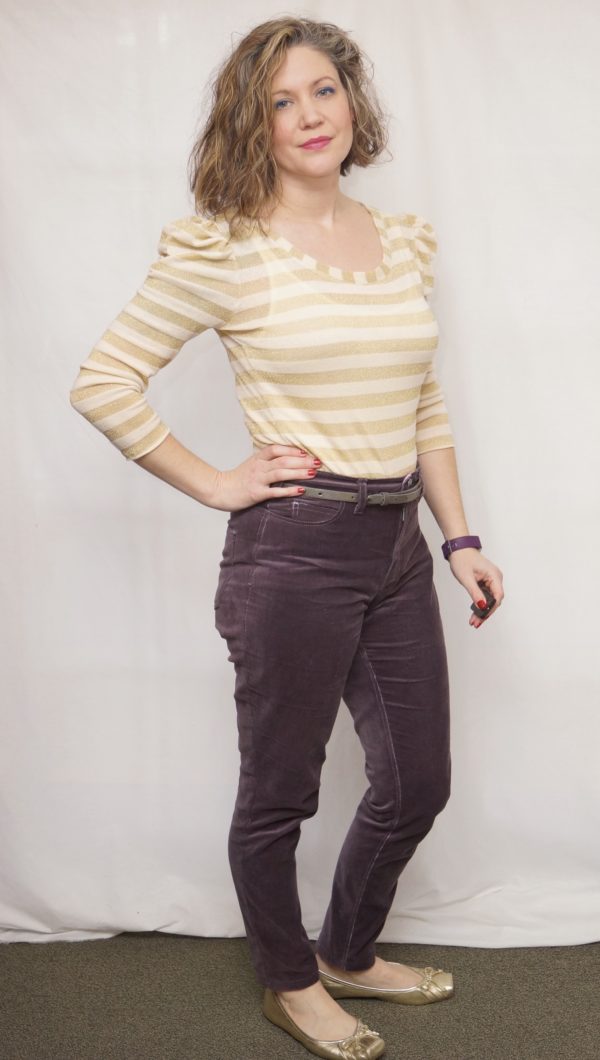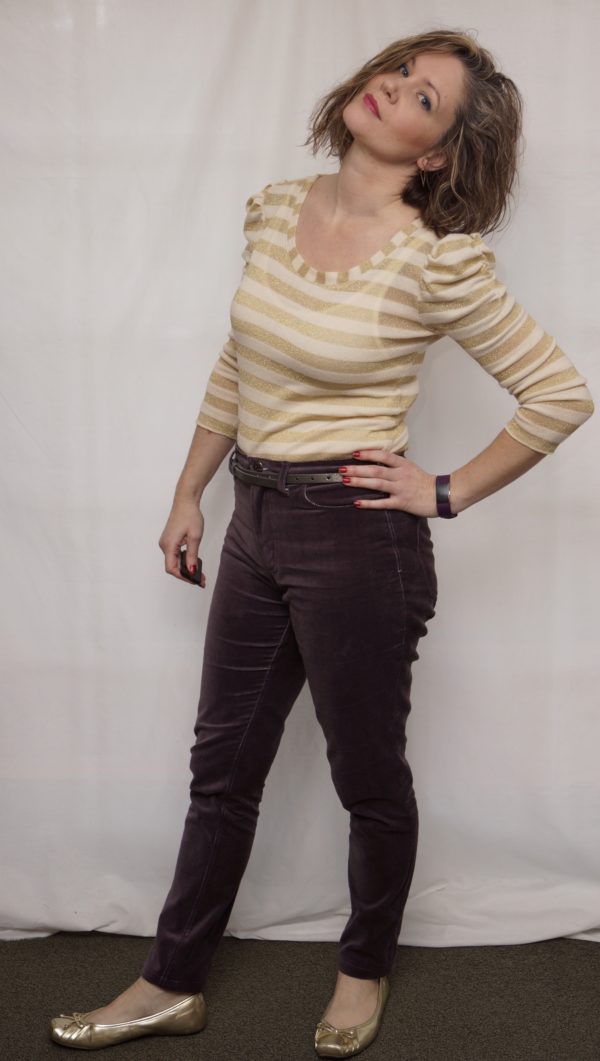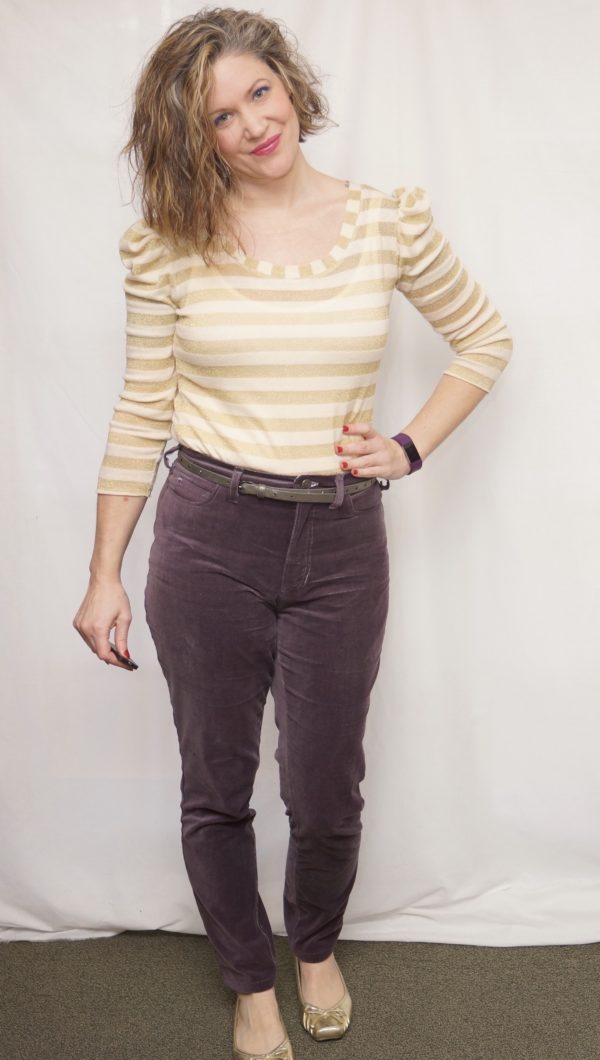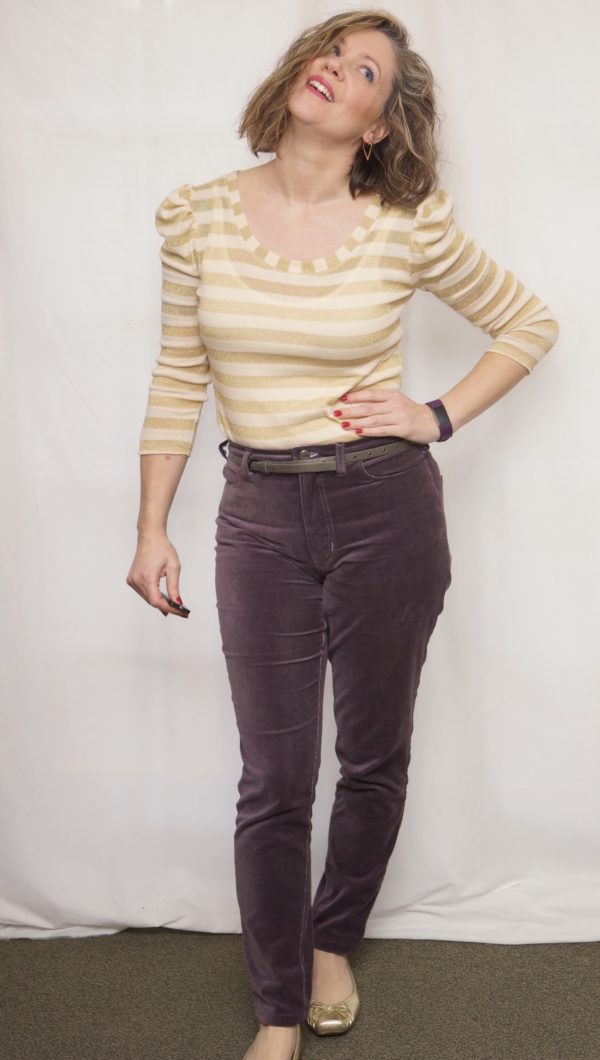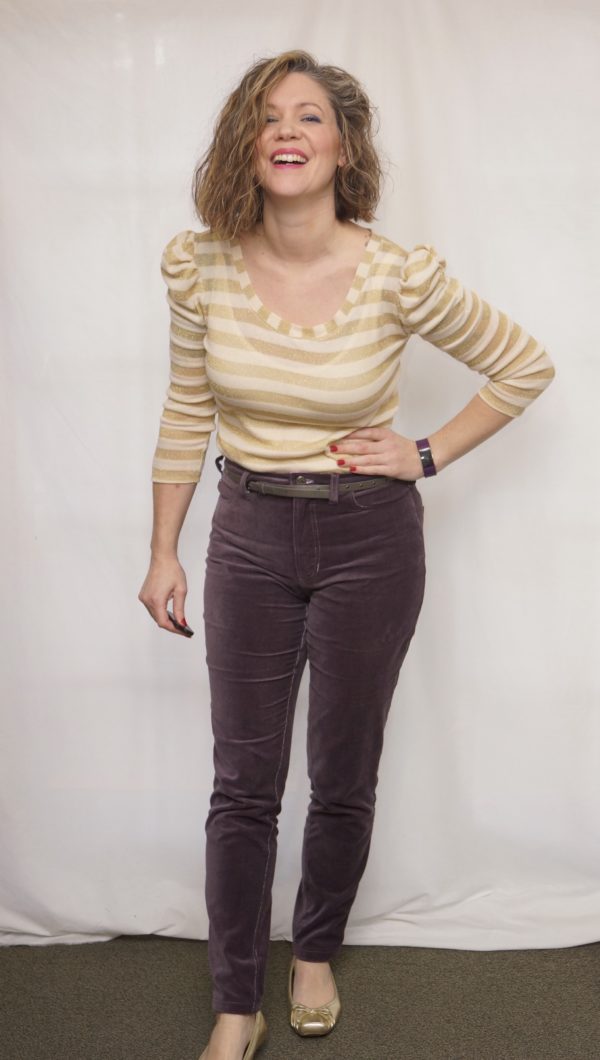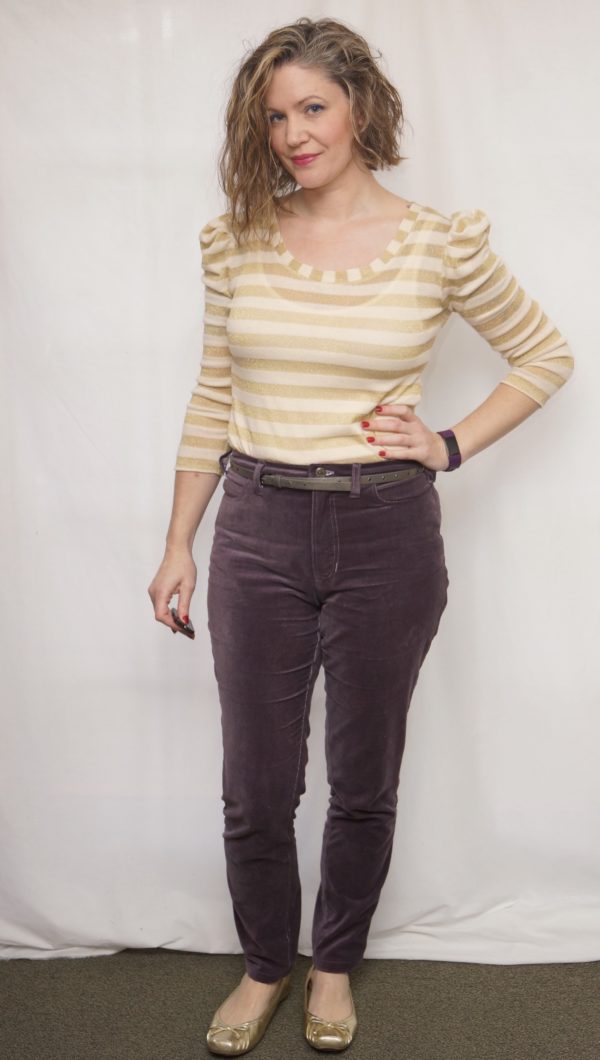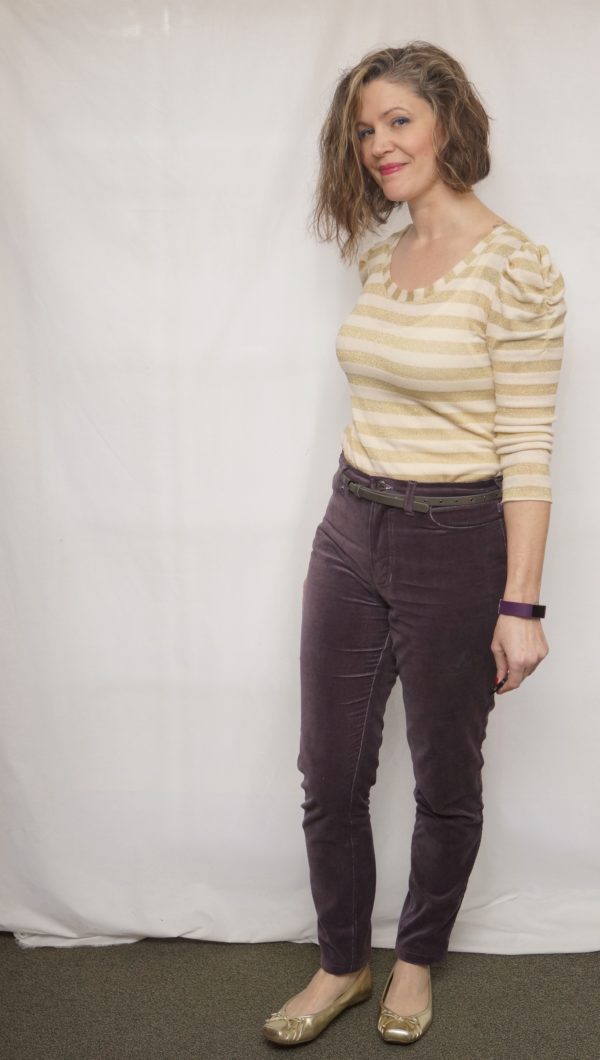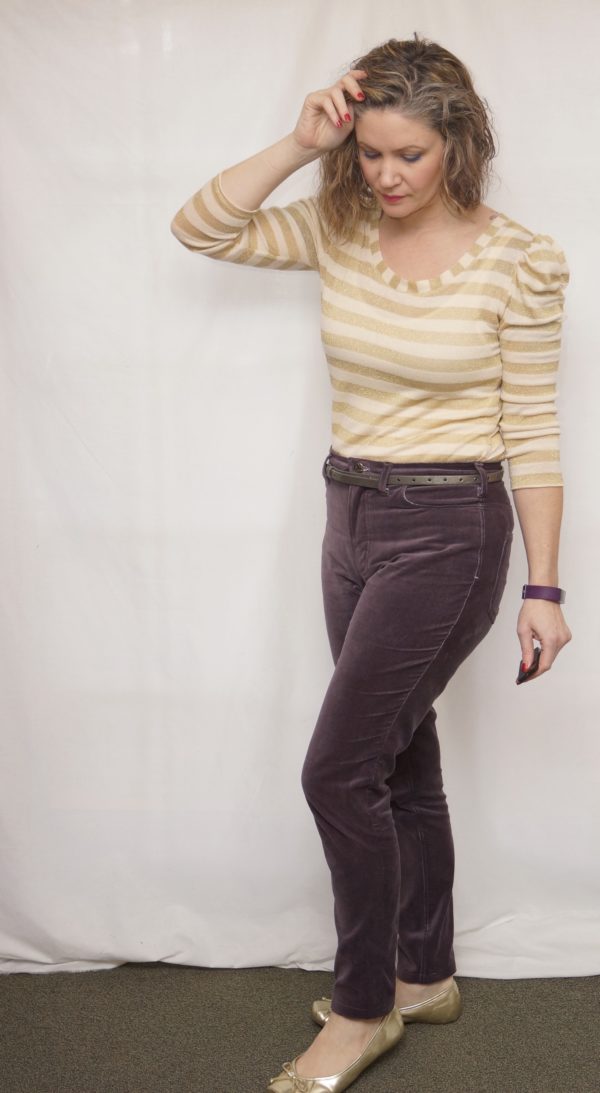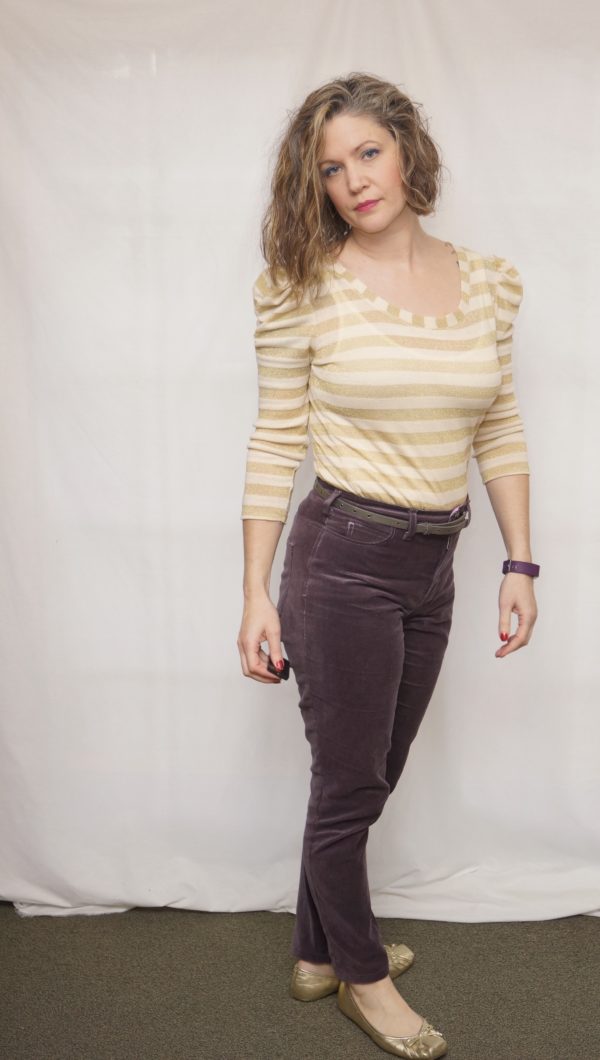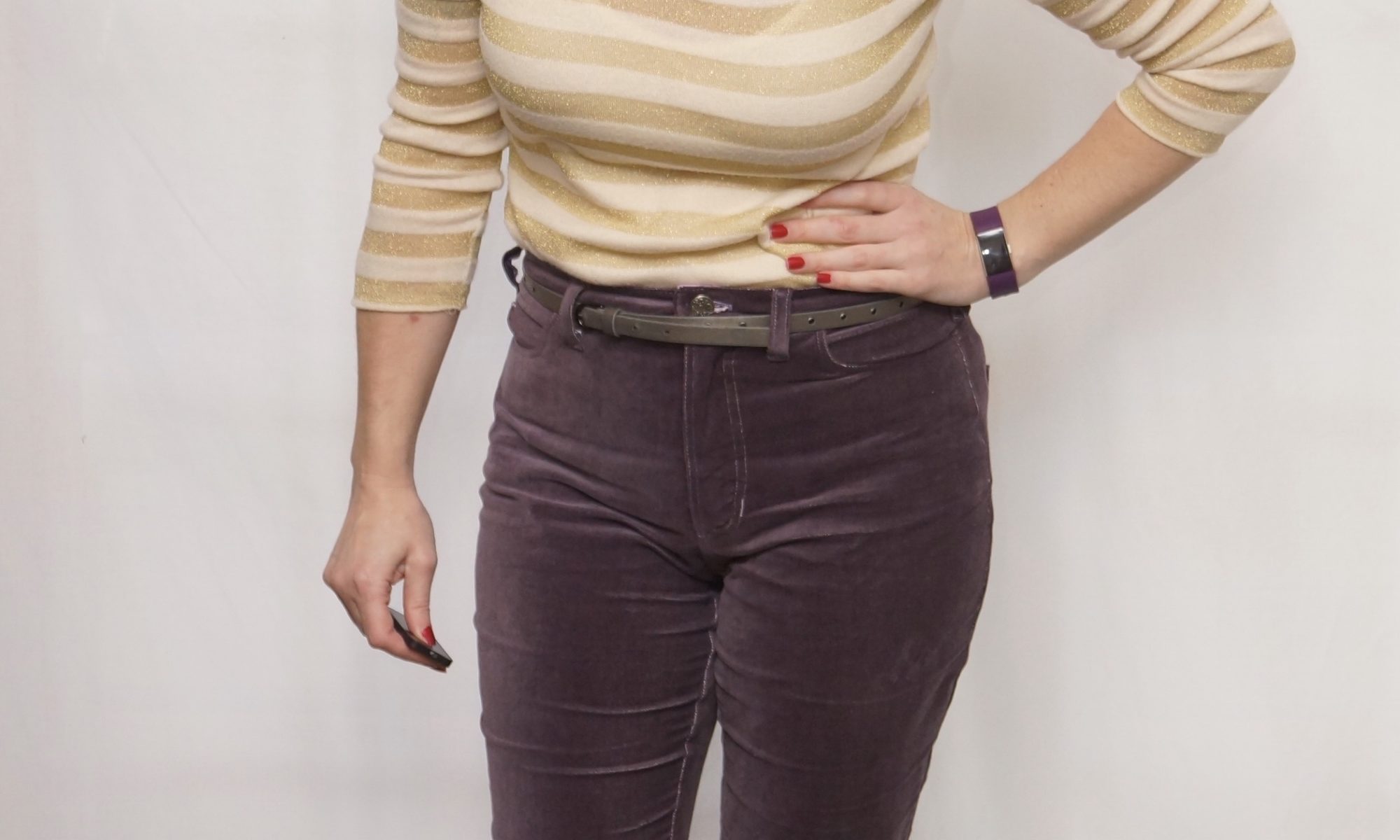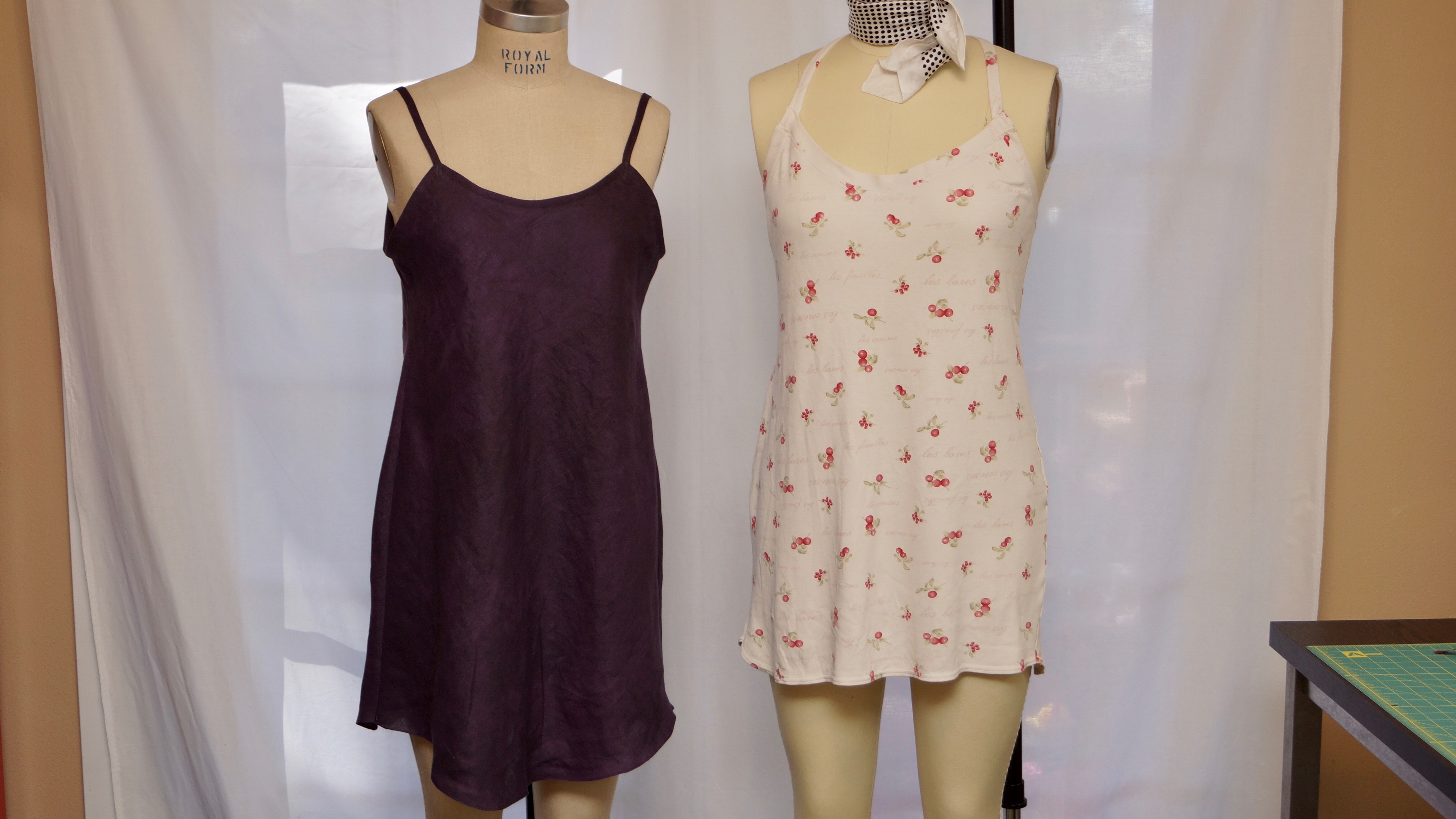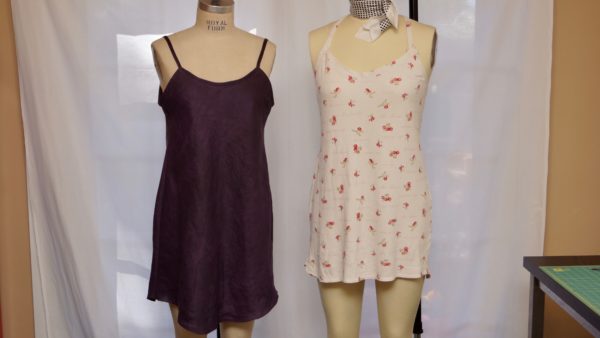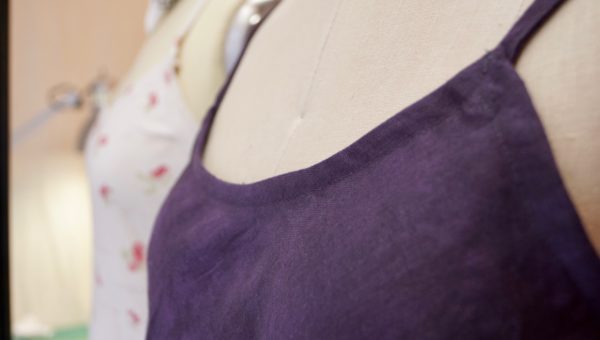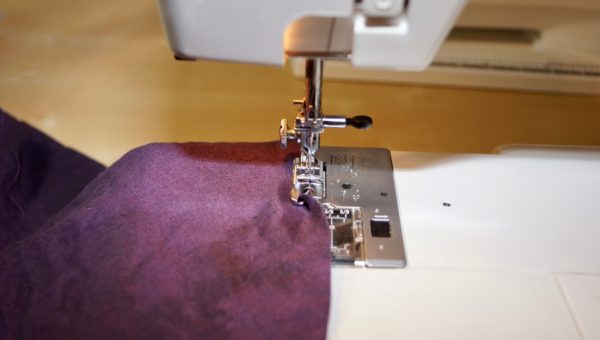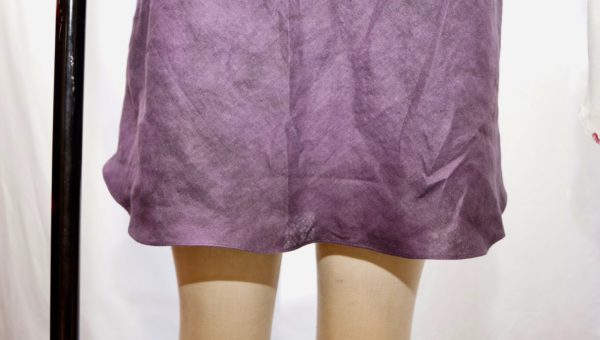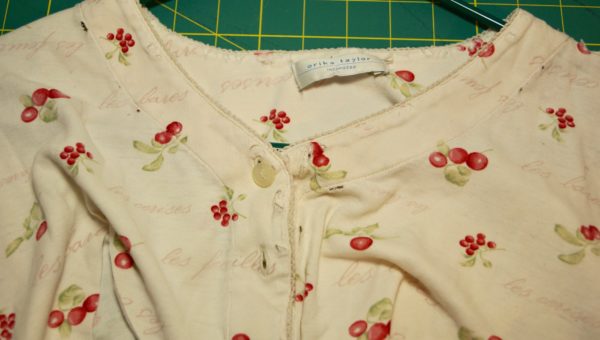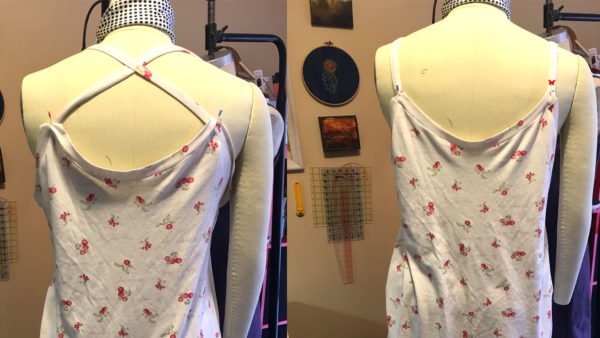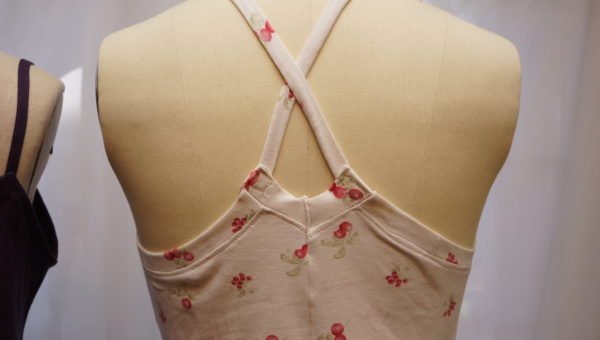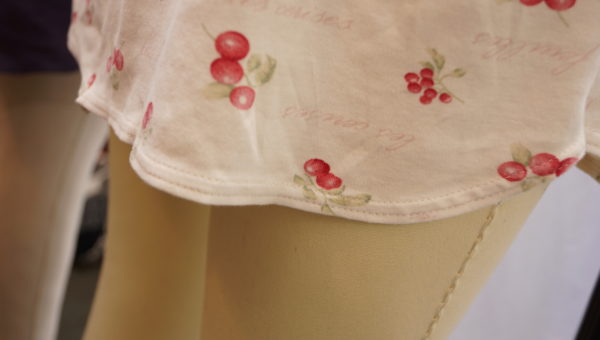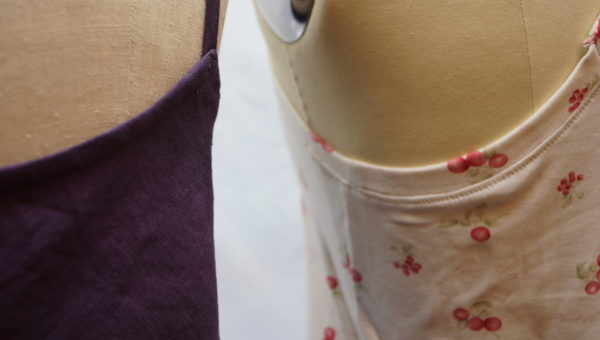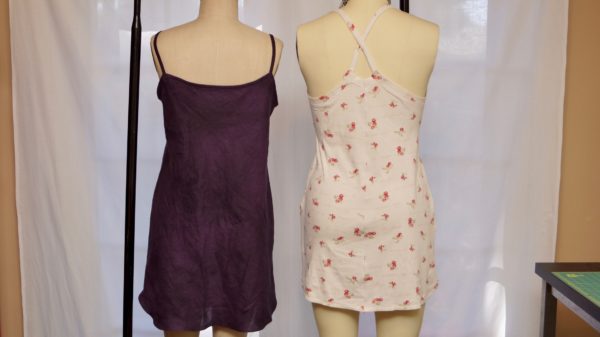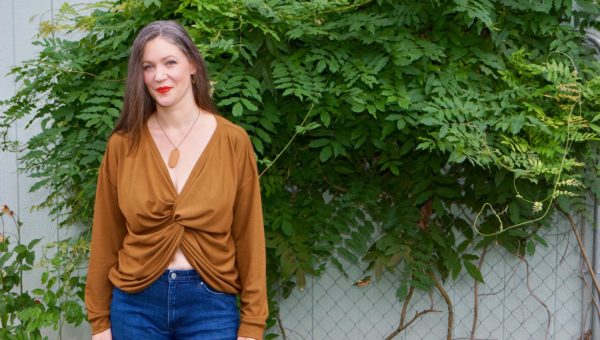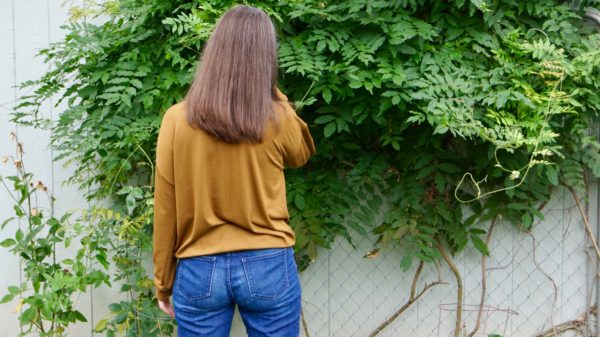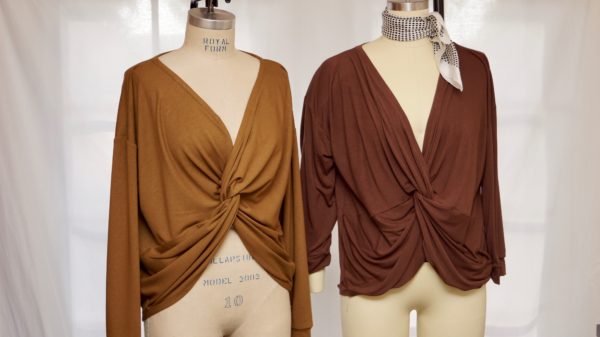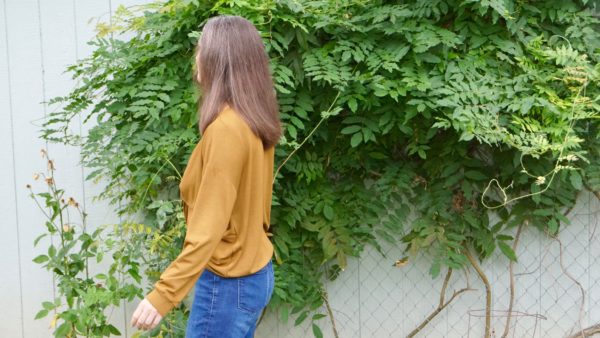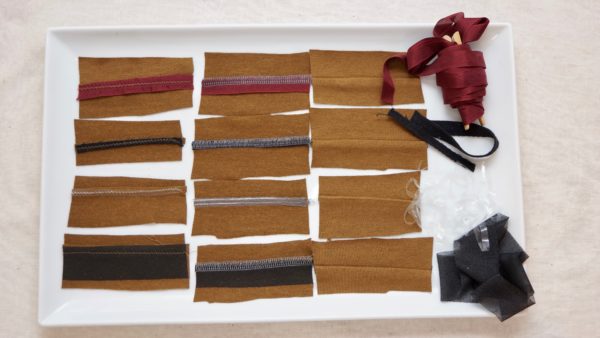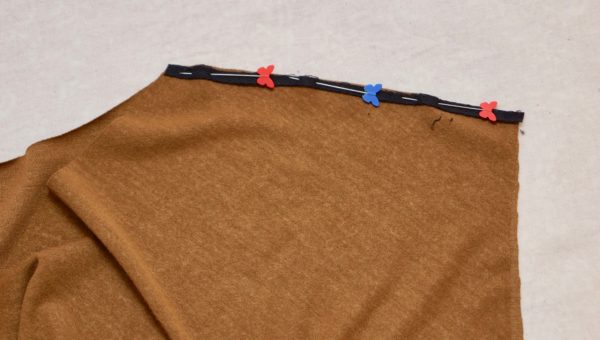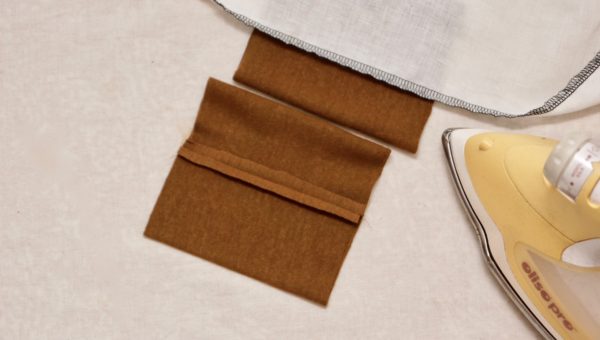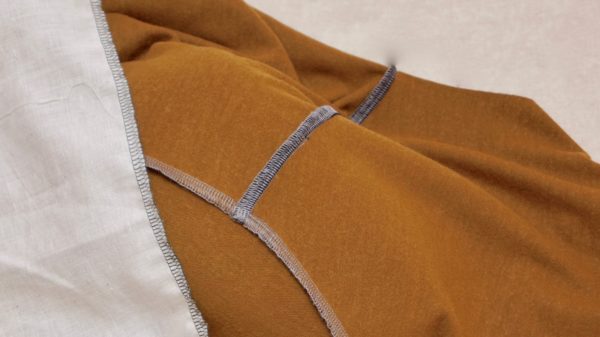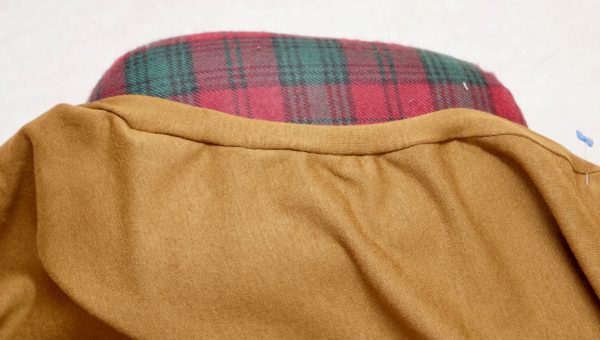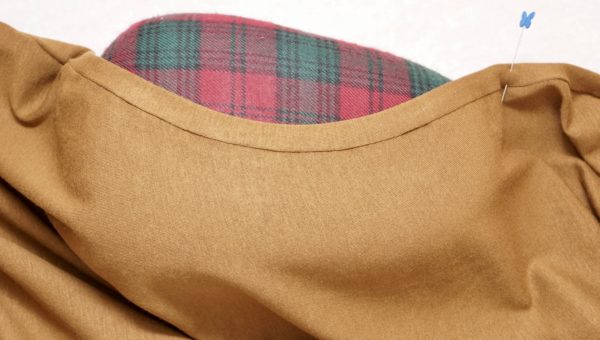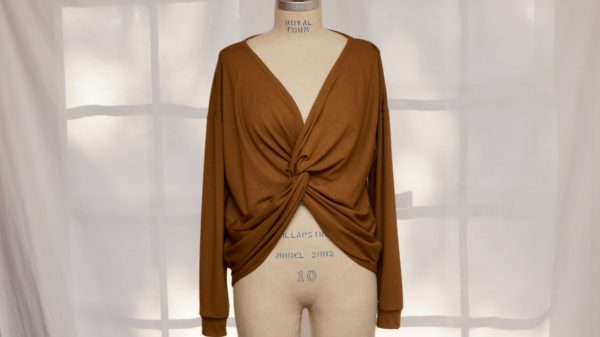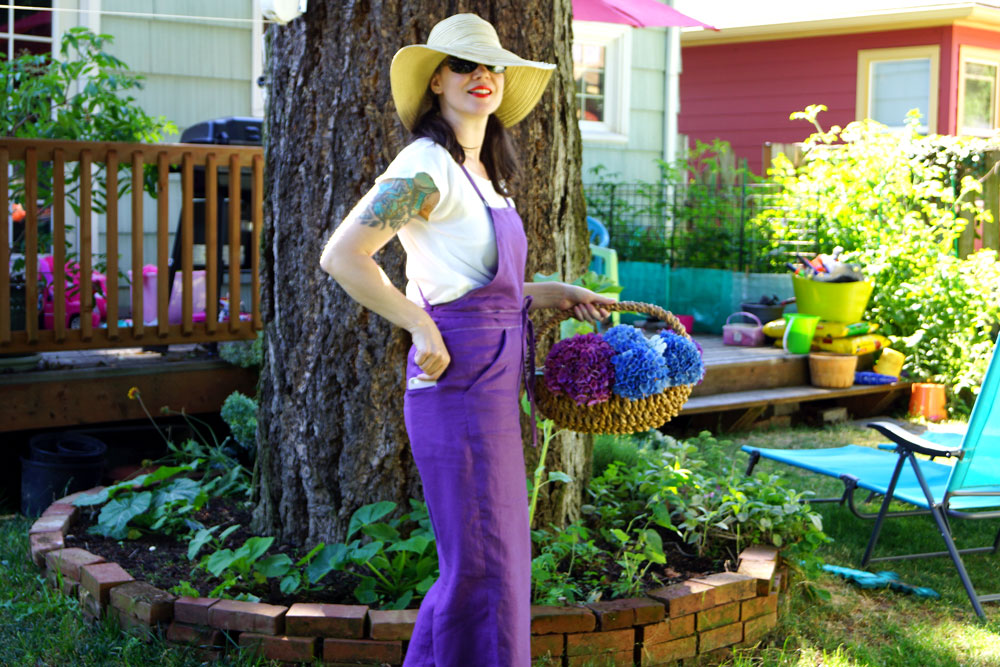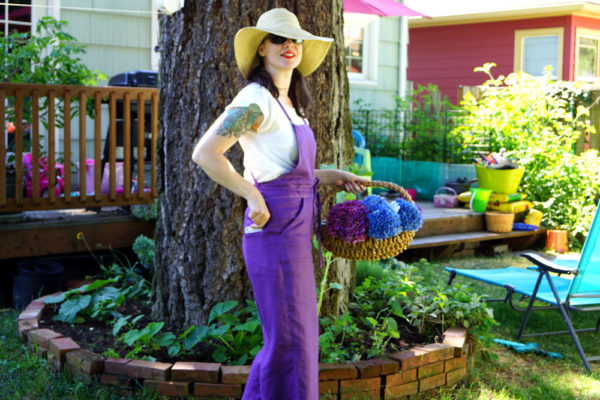
This post first appeared on Britex Fabrics blog July 25, 2017.
Double welt pockets look so scary. There’s little dots, little triangles, blind sewing, to bias or not to bias, more blind sewing with the lining….and the worst part? You’re cutting a hole smack in the middle of fabric. There’s no going back after you cut that hole. Worse? Half the time they’re this unusable, shallow size.
I don’t like fiddley or inefficiency. I think it’s time we knocked double welts off their pedestal. I’ve made a very photo-detailed tutorial with the help of Britex Fabrics, and you’ll be whipping these out in no time.
Normally, you see something like this on your pattern piece with some other rectangle pieces with dots you’re supposed to match up:

I’m going to tell you to ignore everything but the redlines below, and throw out the other pieces:

Trust me. Practice these steps once, maybe twice on some practice fabric, and you’ll never be scared of welt pockets again.
I’m going to show you on a pair of Burnside Bibs from Sew House 7 in some YUMMY mid-weight linen from Britex Fabrics. I’ll be using contrast thread to make it easy to see, but by all means, please use matching thread.
Mark the redlines as shown above. They should look something like this (below) on your fabric. If you’re replacing a patch pocket like I am, your horizontal line is the top of your pocket, and you draw perpendicular lines where there are corner/edge dots. Often in patterns, double welts go through a dart. Re-true your line to horizontal if you’ve got a dart like I have here:
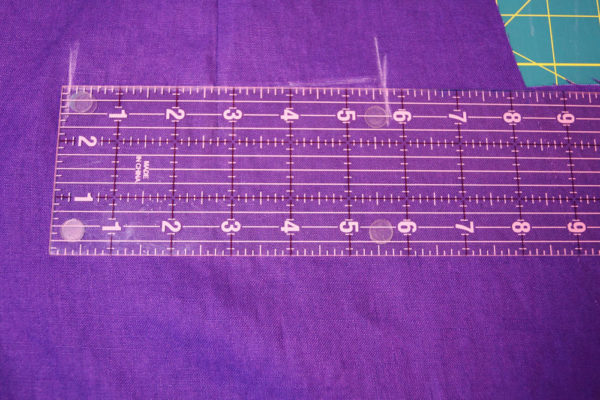
Measure the length of your horizontal line, add 1 inch total to length, and that is the length of your welt pieces. Cut 4, on grain, 2 inches wide, and stabilize with your favorite stabilizer fabric.
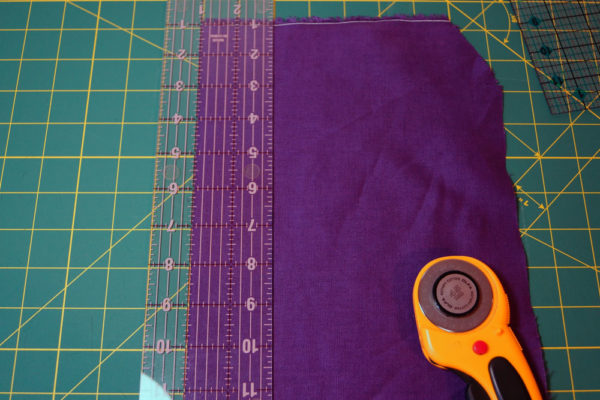
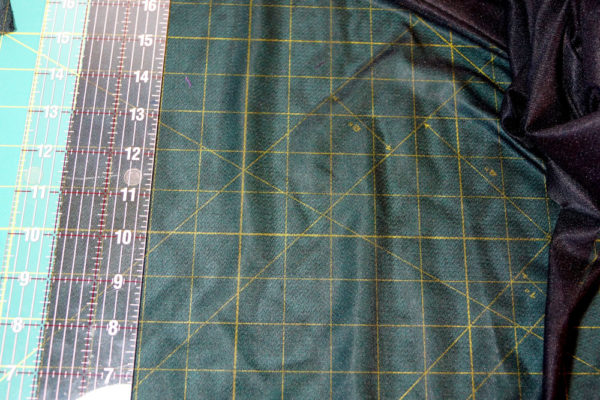
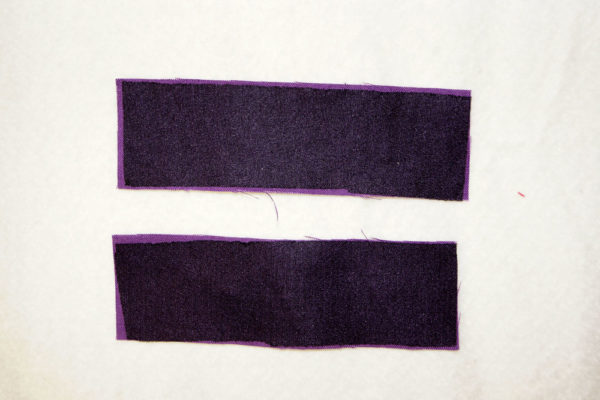
Stabilize the wrong side of your pocket. If you’re not sure what stabilizer to use, call Britex customer service, or go to the 4th floor, and ask someone to help you. I’m using a light knit version just to re-enforce my linen fabric, but not so heavy that it leaves an obvious delineation where the stabilizer starts and stops.
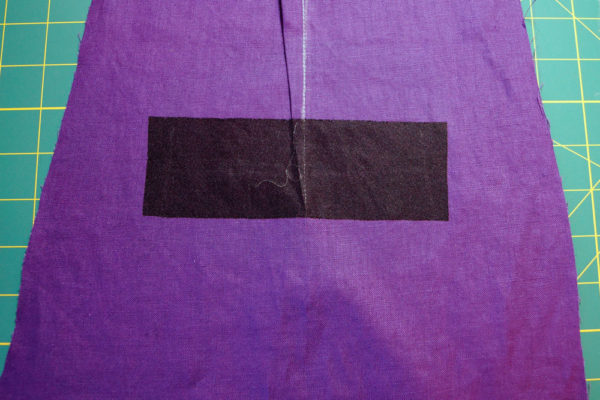
Why are we doing all of this, Becky? Because I actually USE my pockets for my phone, keys, random toys I trip on, granola bar wrappers, and other things throughout the course of a given day. If you cut your welt pieces on the bias as some instructions advise, or don’t stabilize the fabric, you’re more likely to get a warped opening that bags out after time. Also, you can see I’m going to cut right through a dart. That dart is going to create an area no longer on-grain, and I want to stabilize that area.
Fold each welt piece on the length in half, wrong sides together, press, and stitch ¼” from the fold.
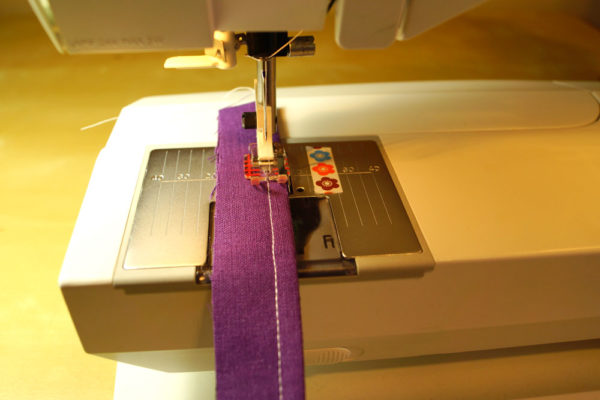
Trim all 4 welt pieces to a ¼” after the seam for a total of ½” wide.
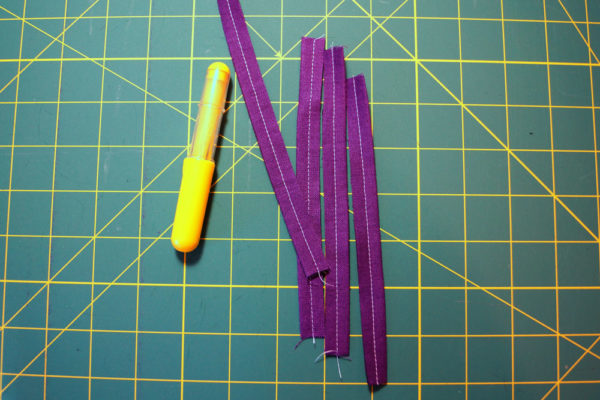
Match up the raw edges of your welt pieces to the horizontal line on your pattern, with an equal amount of overhang on each side:
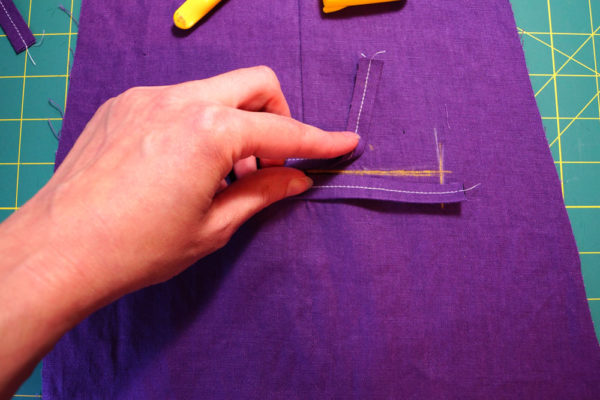
Pin and remark perpendicular lines on top of your welt pieces. These are now your stop lines.
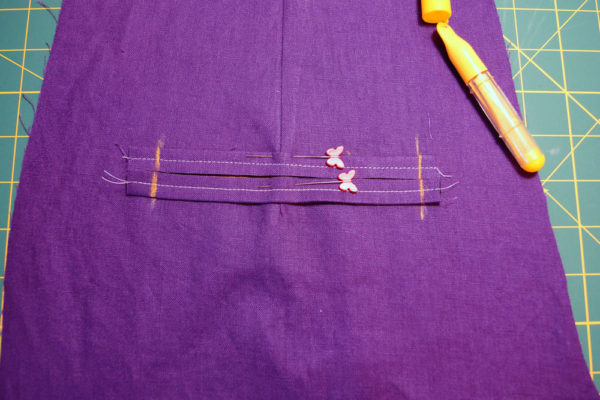
Sew on top of your previous ¼” seam, stopping and back-stitching at your stop lines.
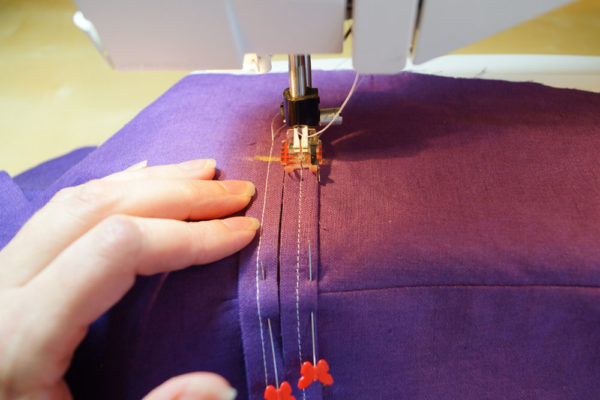
Now, we’re going to cut. Forget those tiny triangles on your original pattern. The dotted lines are your new cutting lines on this image. Cut down the center, and cut nice, long triangles to the stop lines.

Your fabric should look like this:
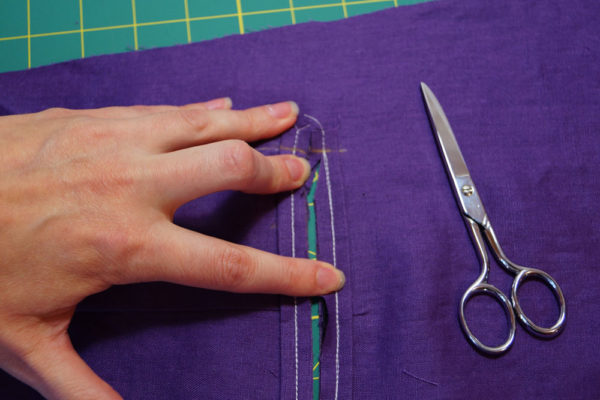
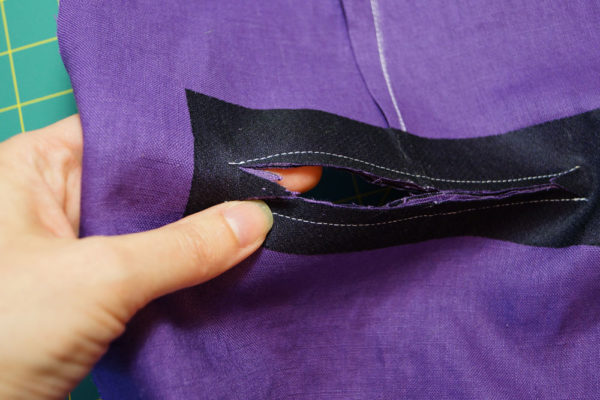
Take the end “tabs” of your welts, and flip your welts to the wrong side:
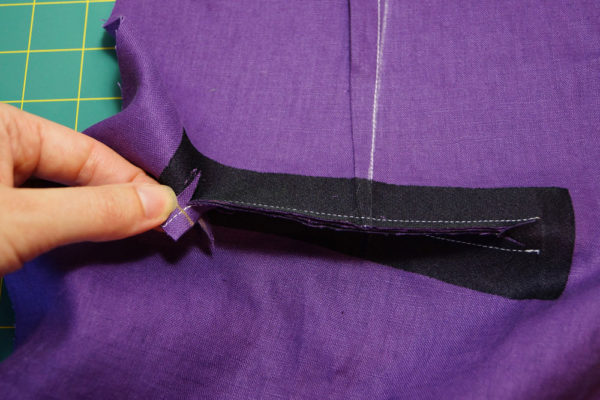
Press, making sure you brought the cut “triangles” to the wrong side:
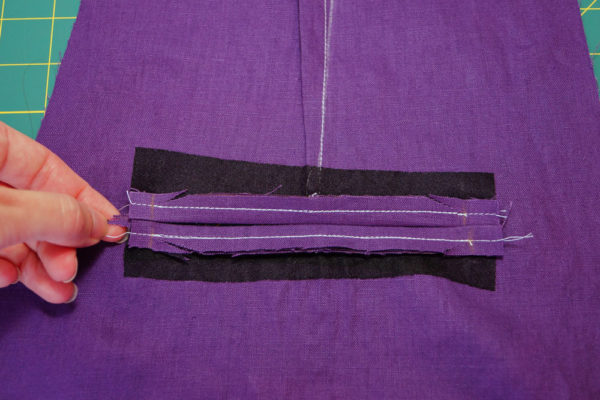
Your front should look flat. If you have any puckers, you have not cut all the way to the end of your stitch lines.
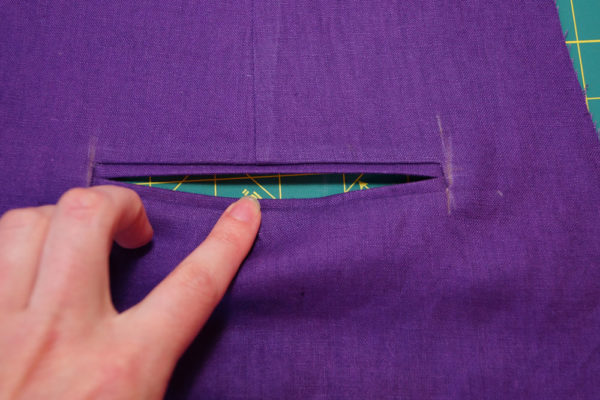
Measure for your pocket. I want my back pockets to fit my phone. I measure from the stitch line of the top welt, to the base of my phone, plus the length from the bottom welt stitch line to the base of my phone, add ¼” seam allowance for both, and the width of my welts. No need to add width seam allowance as I want to capture the edge of the welt sides.
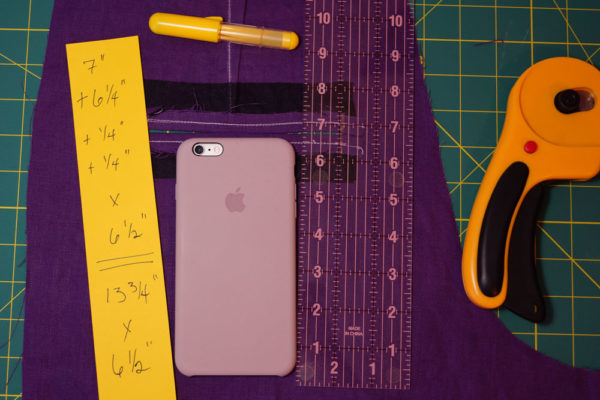
Next to each other, this is my pocket and my pant leg:
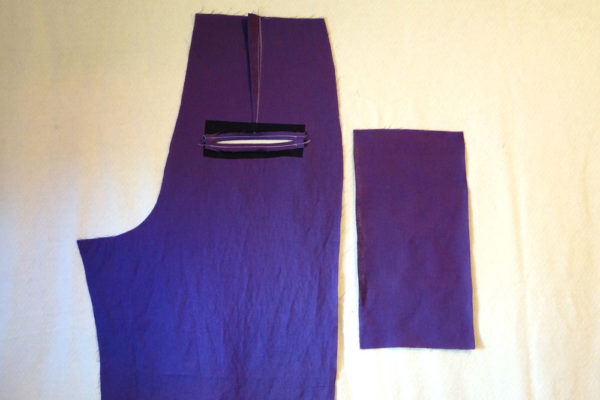
Pin the pocket upside down to the bottom welt. It will look like this:
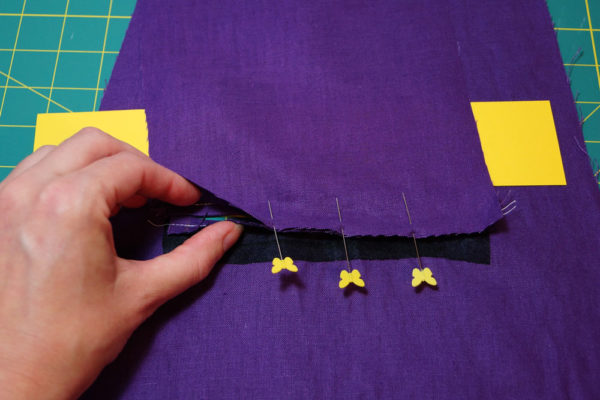
Sew as close as you can to the welt stitch:
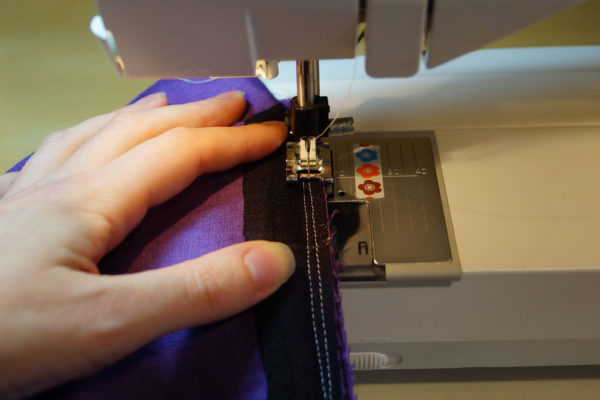
Press down:
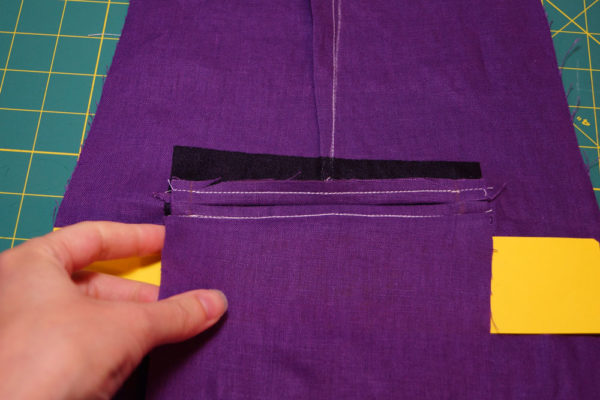
Sew top of pocket to top welt in the same manner:
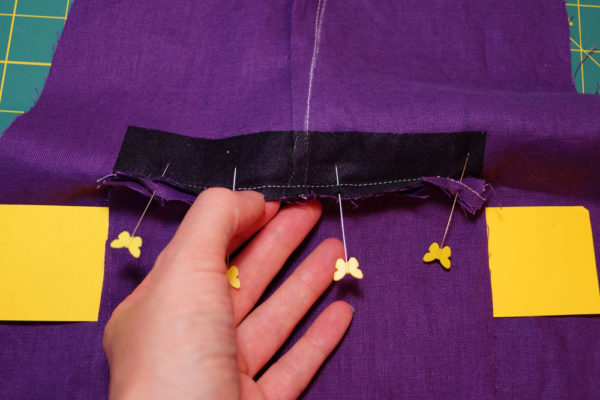
Pin pocket sides, being mindful to pin those triangles (aren’t you glad you made them bigger?):
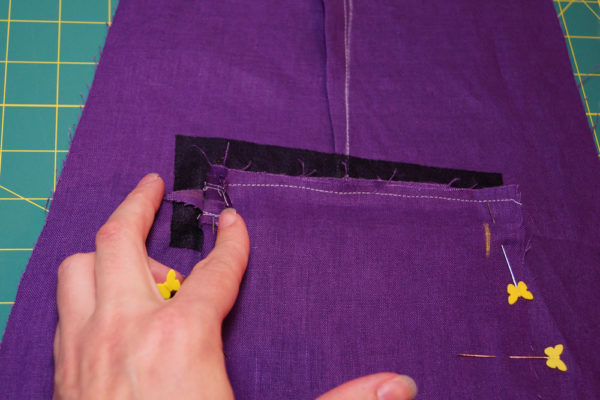
Stitch, again making sure you get as close as you can to nab those triangles:
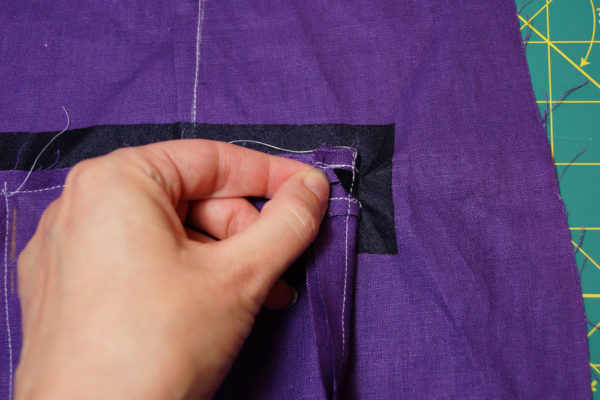
I like to go in at this point and bar-tack down the sides, and “stitch in the ditch” along the top because I’m hard on my pockets. Note your thread will likely be matching, so this will not be so obvious. Some people like to edge-stitch all the way around the welt before attaching the pocket. You choose what you prefer on your garment.
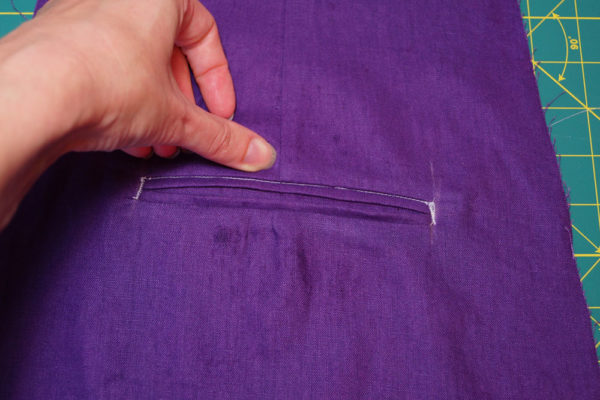
Finish the edges how you like, and stand back to look at your work.
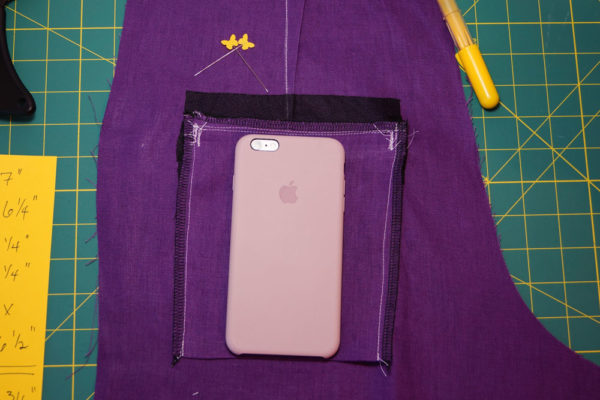
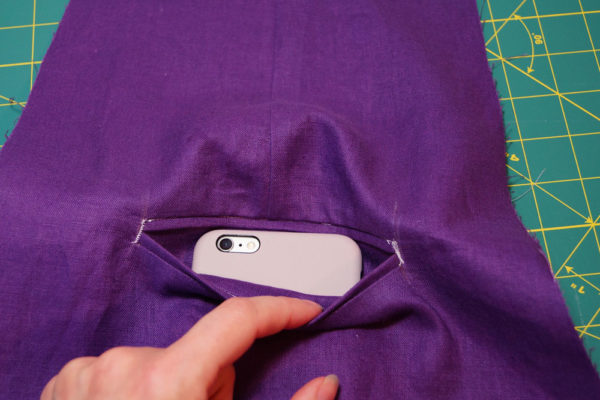
Wasn’t that so much less scary? No dots. No blind sewing. No too-shallow-to-use pockets! Just in time for fall sewing.
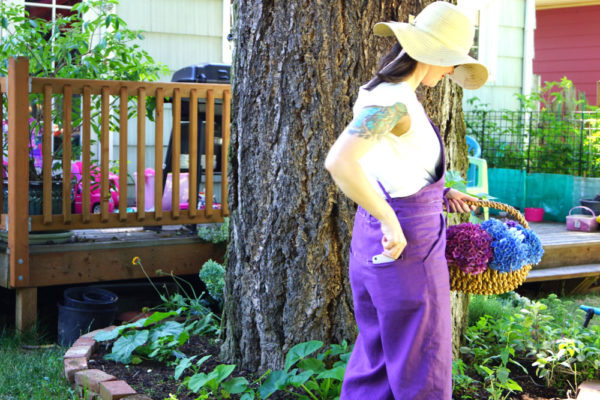
This post was written by me, Becky Johnson of sewbeckyjo.com, for Britex Fabrics. Fabric was provided as compensation, however all opinions, photos, and intellectual content contained herein is my own. The pattern used is my own purchase, and this is not an endorsement, nor was I compensated in using the pattern.
